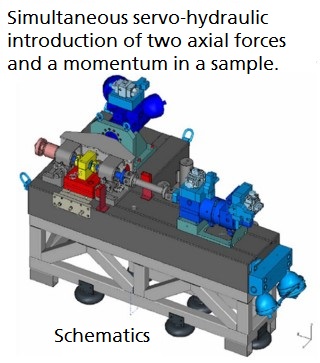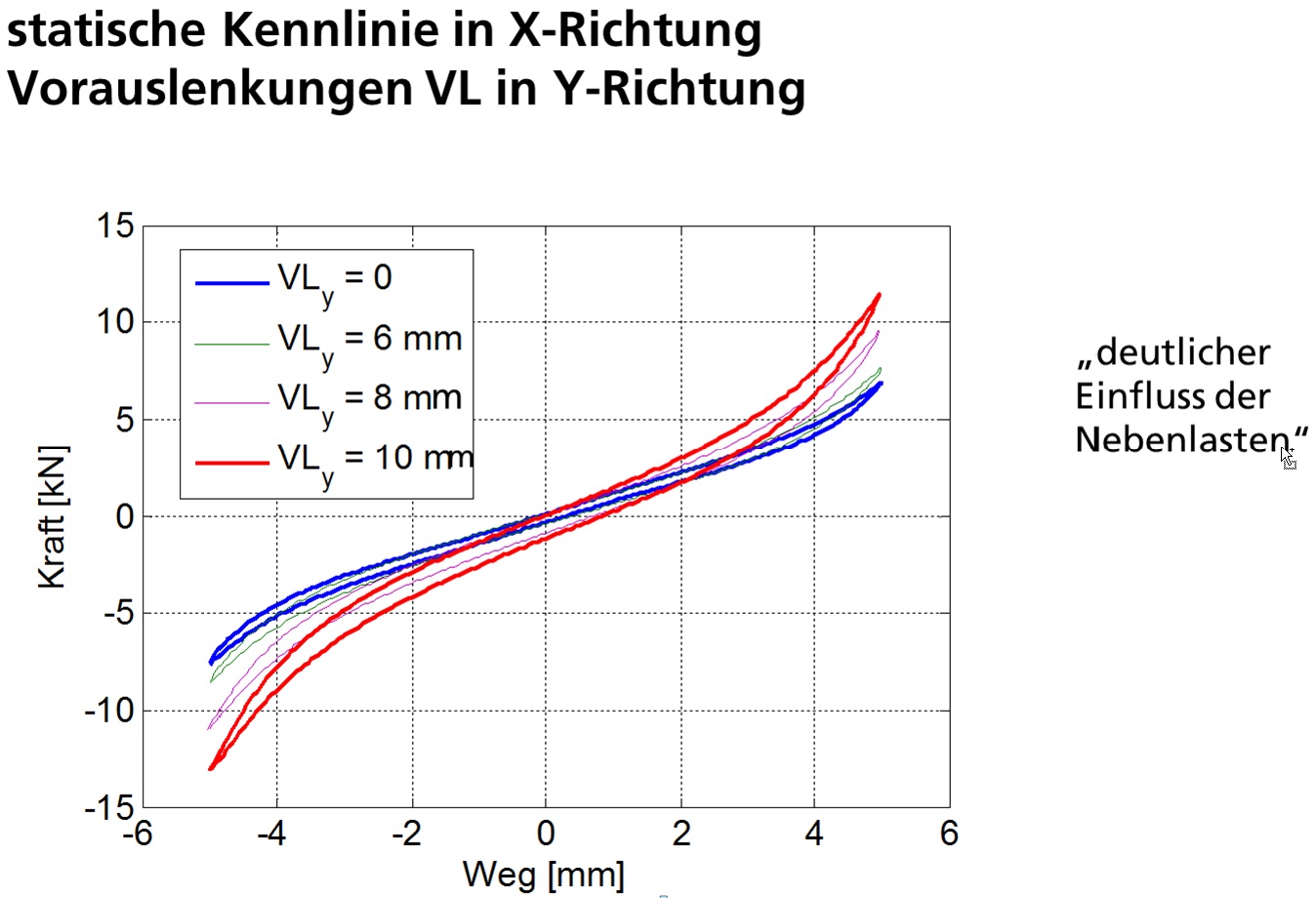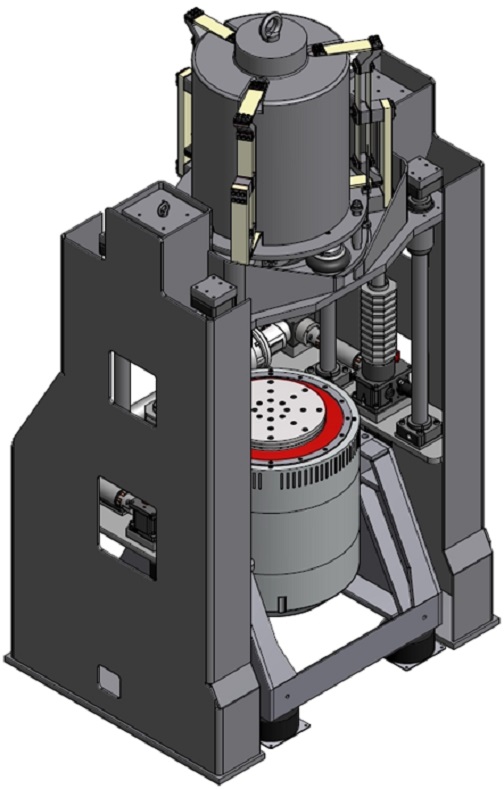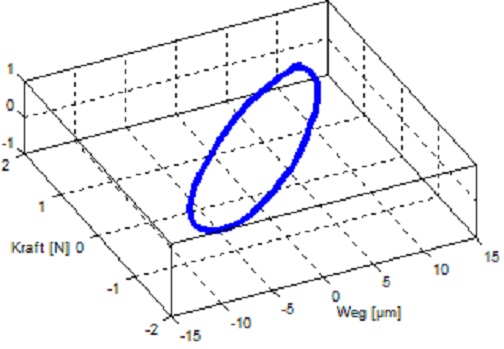Elastomeric bearings are usually used to reduce vibrations or to uncouple partial systems from each other. Besides the requirement to endure mechanical loads under the respective environmental circumstances, the transference behavior of the bearing in the respective spatial direction is of importance. Dependent of the strain amplitude and frequency, the dampening portion of the bearing varies. The characteristic curve of the bearing, as a general rule, is designed strongly non-linear, leading to stiffening at hard strokes at high strains. This characteristic has to be verified by measuring the bearings, to verify the fulfillment of specifications and furthermore provide necessary data for model creation and the consequent numeric system simulation.
Characterization of Elastomeric Parts
Tabbed contents
Driving Dynamics and Structural Durability


For the application areas driving dynamics and structural durability, such a characterization is executed at servo hydraulic testing stations at up to 100 Hz at Fraunhofer LBF. In a specialized testing setup (upper image), such a characterization can also be conducted multi axial and under preloads in other spatial directions. The lower figure shows such a measurement of a typical chassis socket based on natural rubber.
Vibro-acoustic


As part of product development on the issue of noise,vibration and harshness (NVH) the testing and characterization of materials and parts is an essential element. For this reason a reliable experimental determination of characteristic values is important to judge the properties of a part as well as the design and guarantee the intended system characteristics. The dynamic transfer stiffness is among these important characteristic values. It characterizes the vibro-acoustic transfer in complex values und describes the inertia-, suspension-, as well as damping properties at different frequencies. In many cases the dynamic characterization of elastomeric parts (NVH-Parts) takes place in hydraulic testing machines, which limits the availability of high quality measurement results. Additionally to existing servo hydraulic testing techniques, the concept of hybrid testing techniques is followed at Fraunhofer LBF. In terms of technological aspects this concept connects several actuators (electro-dynamic vibration thrusters and electromechanical spindle drive) in order to significantly expand the range of realizable testing frequencies of the usual material testing stations. The dynamic signal components of the electro-dynamic vibration thruster can be overlaid by static signal components. The maximum static force amplitude is at 5 kN and the dynamic force amplitude at 8 kN. For the dynamic characterization of NVH-Parts the testing frequency range is possible up to 2000 Hz. The relation between testing frequency and achievable force amplitude and displacement is dependent on the sample material. The tests are conducted in accordance to user-specific requirements of the German Association of the Automotive Industry (VDA) as well as the newest DIN standards on the topic “Vibro-acoustic Transfer Properties of Elastomeric Elements”. The determined characteristic values are further used in model design and numeric simulation.
Services offered:
High frequency dynamic characterization of passive and active bearings (e.g. Motor bearings, chassis sockets, machine bearings.)
Development of new bearing components (e.g. Active bearings)
Parameterization and validation of numeric simulation models
Transfer path analysis (stiffness method)
Retracing of process measurements in testing stations – testing of active bearings (for example controlling)
 Fraunhofer Institute for Structural Durability and System Reliability LBF
Fraunhofer Institute for Structural Durability and System Reliability LBF